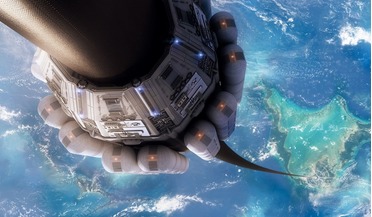 August 2018
Monitoring marine litter by satellite
August 2018
Monitoring marine litter by satellite
...of Science Meeting in Berlin in October 2015, ML, and in particular plastic ML, was addressed as a threat to marine life and habitats as well as presenting health and safety concerns for humans. The International Association for the Physical Sciences...
 November 2018
How many people does it take to colonise an exoplanet?
November 2018
How many people does it take to colonise an exoplanet?
...constrain the theoretical minimum size of an interstellar, multi-generational crew. Concept for a Mars Colony Transfer Habitat Interior showing passengers in suspended animation pods. Artwork by Nathan Kreuzman and Mark Elwood. Smallest possible crew...
 November 2018
Being human in space
November 2018
Being human in space
... team members spat in the face of another researcher and avoided each other by living in opposite places of the habitat. Even on a spaceship, even on Mars, even with the most academically trained people - the ‘elite’ chosen to become...
 February 2019
The Space Elevator – an alternative path to space?
February 2019
The Space Elevator – an alternative path to space?
..., NASA SLS, not to mention aerospike engines) is tough. Developing space infrastructure such as space solar power or habitats will require either thousands of reusable rockets or one scaled-up space elevator. Transport economics is imperative, but...
 February 2019
The challenge of procreation for future off-world settlers
February 2019
The challenge of procreation for future off-world settlers
... the kind of technological solution needed to remove the last barrier to a true colony on the Moon or Mars These ‘habitat’ vehicles would contain living areas and more could be added as needed, allowing colonists to live and work...
 April 2019
Is a military space force justified?
April 2019
Is a military space force justified?
... and manufacture all of the hardware and infrastructure required. In addition to the launch vehicle, troop carriers, and habitats, command and control capabilities would be needed, as well as communications. The necessary parts and components are not...